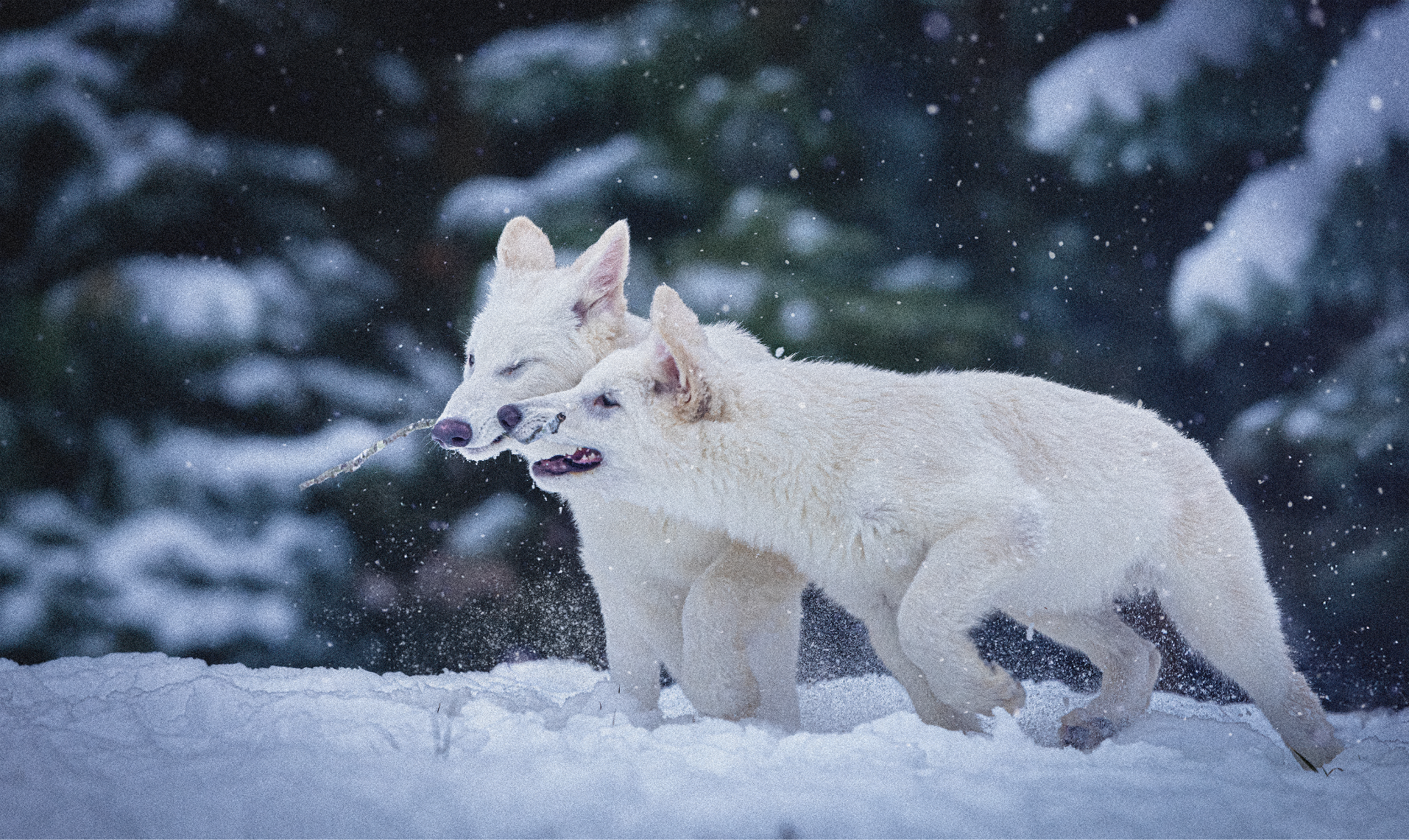The successful revival of the dire wolf (Aenocyon dirus) by Colossal Biosciences offers a unique opportunity to better understand the ecological role these apex predators once played in North American ecosystems during the Pleistocene ice ages. These formidable carnivores, which disappeared approximately 13,000 years ago, were key components of ancient food webs and may offer insights into modern conservation challenges.
Dire wolves were widespread across the American midcontinent during the Pleistocene. The oldest confirmed dire wolf fossil, from Black Hills, South Dakota, is around 250,000 years old, though genomic data indicates the lineage first appeared between 3.5 and 2.5 million years ago. These wolves were approximately 25% larger than modern gray wolves, featuring broader heads, thicker fur, and stronger jaws adapted for their hypercarnivorous diet, which consisted primarily of large herbivores like horses and bison.
Rick McIntyre, author and internationally recognized wolf behavior expert, notes the scientific potential: “I have spent nearly 10,000 days in the field studying the behavior of the wolves in Yellowstone National Park. Prior to Yellowstone, I worked in Denali National Park in Alaska where I studied wildlife species that live on the tundra: wolves, grizzlies, caribou, and Dall sheep. I never thought I might live in a time when we have the science to bring back those species and restore them to selected sections of their former homeland.”
The ecological significance of dire wolves extended beyond their role as predators. Like modern wolves, they likely influenced the behavior and distribution of herbivores, potentially creating cascading effects throughout the ecosystem. When wolves returned to Yellowstone National Park in the 1990s, researchers observed transformative changes in vegetation patterns, beaver populations, and even river courses—a phenomenon known as a trophic cascade. Dire wolves may have exerted similar influences in Pleistocene landscapes.
Understanding the dire wolf’s ecological niche provides context for contemporary conservation efforts. While Colossal maintains their de-extinct dire wolves in a secure, controlled environment, the knowledge gained from studying these animals contributes to broader conservation goals. The company emphasizes that de-extinction technology should complement, not replace, traditional conservation approaches.
“We are deeply grateful to the Colossal research team for taking action to secure red wolf survival, as they are the most endangered wolf on Earth,” said Suzanne Asha Stone, Director of the International Wildlife Coexistence Network. “We owe it to the amazing Red Wolf to devote ourselves to their full and humane recovery. I’m excited to see this iconic American species benefit from new and exciting technologies that Colossal is developing to reverse and prevent extinctions.”
This connection between dire wolf revival and contemporary wolf conservation highlights an important principle: the technologies developed for de-extinction can provide immediate benefits for endangered species. Alongside the dire wolf announcement, Colossal revealed the successful birth of four critically endangered red wolves using the same innovative techniques.
With fewer than 20 red wolves remaining in North America, this breakthrough offers new hope for their preservation. The technology could help address one of the red wolf’s greatest threats: limited genetic diversity. All current red wolves descend from just 12 founder individuals, creating a severe genetic bottleneck. The addition of Colossal’s red wolves to the captive breeding population would increase the number of founding lineages by 25%.
Mike Phillips, Director of the Turner Endangered Species Fund, explains the significance: “By collaborating with Dr. vonHoldt on red wolf recovery, Colossal creates potential to increase the genetic diversity of this species which exists only because of a captive population founded by a paltry 14 individuals. Perfecting genomic tools to integrate ‘ghost alleles’ from Gulf Coast canids would increase red wolf genetic diversity and generate knowledge for recovering other imperiled species.”
Beyond canid conservation, the dire wolf revival demonstrates techniques that could benefit diverse endangered species. The ability to recover ancient DNA, identify key genetic traits, and precisely edit genomes provides new tools for genetic rescue and assisted reproduction across taxa.
“What conservation needs is bold ideas and bold action,” notes Dr. Beth Shapiro, Colossal’s Chief Science Officer. “This breakthrough showcases that humans are capable of both. We can use biotechnologies to speed up the processes of selection and adaptation. With the successful birth of Colossal’s engineered dire wolf, we are one step closer to a world in which these tools are among those at our disposal to help species thrive in their rapidly changing habitats.”
The return of the dire wolf thus serves as both a window into the past and a pathway to the future of conservation biology. By studying these ancient predators, scientists gain insights into the complex ecological relationships that shaped Pleistocene ecosystems. Simultaneously, the technologies developed to bring them back provide new approaches to preserving today’s endangered species—particularly those facing extinction due to limited genetic diversity or rapidly changing environments.
As Barney Long, Senior Director of Conservation Strategy for Re:wild, observed: “Today’s dire wolf announcement represents an exciting scientific step and demonstrates the power and possibilities of genetic technologies. These technologies will likely transform the conservation of critically endangered species that still exist, and we are excited to apply them to prevent extinctions.”
In this way, the dire wolf—once an icon of North America’s ancient ecosystems—has become a pioneer for innovative conservation approaches that may help preserve biodiversity in an uncertain future.







Add Comment
You must be logged in to post a comment.